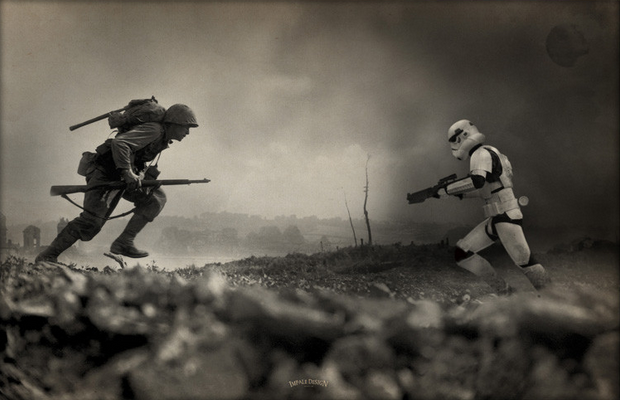I’m thrilled when a work of historical fiction in any media gets it just right. The “Wolf Hall”‘ miniseries’ period-correct under- and headwear, “The VVitch”‘s word-for-word dialogue from seventeenth century primary sources, Sarah Waters’ carefully researched nineteenth century lesbian lives. My overkill bibliography and trip to Prague are my effort to do the same for the Dee/Kelley book. One of the main reasons I want to finish the second draft by June is so I can seek sixteenth century-savvy beta readers at this year’s HNS conference. I need someone to catch my mistakes!
Having said this, I first came to historical fiction disguised as something else and thus my influences were inherently non-factual. Not just books either-my earliest influences were visual rather than textual. So I kinda love anachronisms if they’re done consciously and well.
Take Adam Ant, my first exposure to historical fashion remixing and probable first crush (yes, I am old). I saw his (excellent!) “Kings of the Wild Frontier” show back in January. Full of jangly spaghetti western guitars, whooping shouts and four-on-the-floor drums, the music is eclectic, but his aesthetic even more so. Take the video for “Dog Eat Dog”, a cross of New Romantic eyeliner, nineteenth century militaria, and Native American trappings:
The feathers and war paint have an uncomfortable whiff of cultural appropriation (never said my faves weren’t problematic). To his credit, when criticized by Native American leaders back in the day Adam invited them to his show and addressed their concerns, volunteering to axe his iconic look if they found anything offensive.
These days he’s ditched the white stripe in favor of a more eighteenth century “dandy highwayman” mix, including the swashbucklingest bicorn in rock.
Through Adam Ant fandom I discovered Vivienne Westwood, former punk turned fashion designer. Her 1981 Pirates collection is my favorite for obvious reasons, but I’m also tickled by her further variations on historic costume, like the mini crini and unisex corsetry. Here’s Westwood talking about her research process at the Wallace Collection:
Love it or hate it (and I’ve met folks of both stripes) “The Knight’s Tale” goes full on creative anachronism to portray medieval jousts as the Superbowls of their time. Contemporary music and tropes dance through the medieval(ish) background. It’s hard to beat an opening scene where the tiltyard crowds stomp out “We Will Rock You”:
Finally, one I can participate in: renaissance faires. I go to my local faire at least once a year to dress up, drink beer, and listen to bagpipes. Though my garb tends towards accurate-ish, everyone from stitch-for-stitch reenactors through deliberately out-of-place Trekkies finds a home at the pub sing. I could get snarky but it’s more fun to take renn faire as it is: six weeks of Halloween for grown ups! Here’s a video of some of last year’s acts showing the spectrum of aesthetic and anachronism, including more “medieval” Queen:
Would I ever write historical fantasy? Maybe, though I suspect my rigid mind and love of research would drown out any fantastical elements. Still, I have medieval aliens and an graphic novel about an executioner in my plotbunny file, so we’ll see.
What are your favorite mashups?




